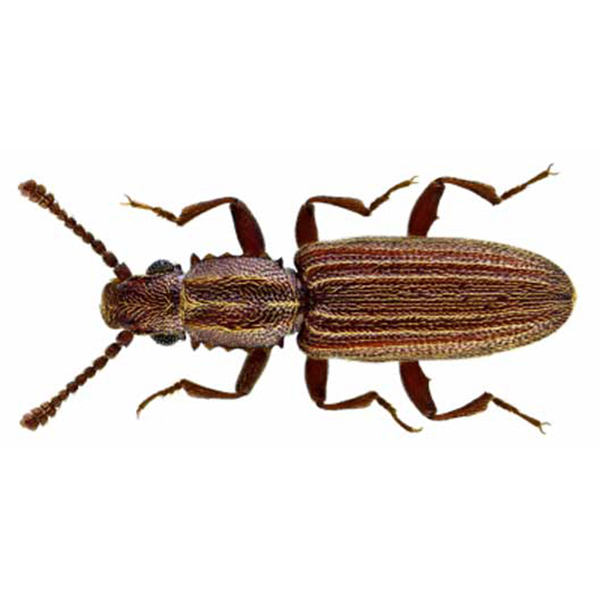Biology
Adult Oryzaephilus mercator beetles are a red-brown colour, around 2.5 mm in length, and live an average of 6-10 months. Oryzaephilus mercator develop wings in adulthood and can take flight which enables them to infest facilities which were not previously infested. Mature females can produce between 43 and 285 eggs every 28-42 days.
The eggs are microscopic, white and elongated. It takes around 35 days in optimum conditions for the life cycle of the O. mercator egg to reach completion and enter larval stage. Once developed, larvae are free living within the food commodity. The larvae of the merchant grain beetle progress through 3 instars over 2 weeks before pupation.
The larvae of Oryzaephilus mercator are creamy white in colour with a brown head and 3 pairs of legs. Pupae are red-brown in colour. Pupal development lasts for approximately 1-3 weeks whilst pupation takes place in fragile cocoons formed from the surrounding food material.


